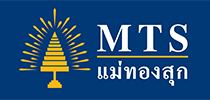



BOJ Shifts Policy Framework to Targeting Japan’s Yield Curve
.png)
The Bank of Japan shifted the focus of its monetary stimulus away from a rigid target for expanding the supply of money, to controlling the shape of yields across different maturities.
Governor Haruhiko Kuroda led his board in keeping the benchmark rate for a share of bank reserves at negative 0.1 percent. The central bank said that the monetary base target, which previously had been set at annual increases of 80 trillion yen ($780 billion), may now fluctuate in the short term as policy makers seek to control the yield curve.
The BOJ scrapped a target for the average maturity of its government bond holdings. Board members also pledged to expand the monetary base until inflation is stable above the 2 percent target -- committing to an overshoot of consumer-price gains.
The BOJ has been the most daring of global central banks in using monetary stimulus to confront deflationary pressures and stagnation, but Kuroda recently began to publicly weigh the costs of its extraordinary easing against the benefits, a shift from his "whatever-it-takes" approach of the past three-plus years.
The BOJ also faces questions about the sustainability of its purchases of Japanese government bonds. The central bank now owns a third of outstanding JGBs. The pace of its buying is draining the market of supply, and many commercial banks are running out of JGB inventory to sell
Possible options for additional easing
With regard to possible options for additional easing, the Bank can cut the short-term policy interest rate and the target level of a long-term interest rate, which are two key benchmark rates for yield curve control. It is also possible for the Bank to expand asset purchases as has been the case since the introduction of QQE. Moreover, if the situation warrants it, an acceleration of expansion of the monetary base may also be an option.
Stay or Go?
Support for a rate increase gathered this summer as employers added, on average, 232,000 jobs over the past three months, highlighting a split on the FOMC. The camp that favors gradual rate increases includes three officials who vote on policy this year, led by Boston Fed President Eric Rosengren, who is wary of deliberately letting the economy overheat.
Rosengren or Cleveland’s Loretta Mester could potentially join Kansas City Fed chief Esther George in dissenting if the Fed stays on hold. George has already dissented three times this year in favor of higher rates.
In the opposing camp, Governors Lael Brainard and Daniel Tarullo argued in recent days that the Fed could afford to be patient as it waited for stronger indications that inflation is picking up. The core version of the Fed’s preferred gauge of inflation, which strips out volatile food and energy components, was 1.6 percent in the 12 months through July. It has been below the central bank’s 2 percent target for four years.
Yellen’s last public remarks were Aug. 26 at the Kansas City Fed’s annual symposium in Jackson Hole, Wyoming, where she said that the case for raising rates had strengthened. That was before August readings for manufacturing, services and retail spending all came in below expectations.
“The incremental news about the economy has been mildly disappointing across a variety of indicators,” said James Sweeney, chief economist at Credit Suisse Securities USA LLC in New York. “If the decision were close, you’d expect this to sway it to no-go.”
In a Bloomberg survey conducted Sept. 12-14, 48 economists assigned an average probability of 15 percent to a rate hike Wednesday, with 5 percent odds assigned to November and 54 percent to December.
A Hawkish Hold?
In the same survey, 65 percent of respondents believed the Fed will “use a stronger form of forward guidance to signal that it intends to hike rates soon” if it leaves rates on hold, a strategy sometimes referred to as a “hawkish hold.”
“This FOMC meeting will be quite contentious,” said Jonathan Wright, an economics professor at Johns Hopkins University in Baltimore and a former Fed economist. “They will try to achieve as much consensus as possible. That means that if they stand pat, as I think most likely, there will be signaling of a likely rate hike later in the year.”
That could include, he said, bringing back an assessment last seen in December that risks in the economy are, or nearly are, balanced, Wright said.
Oil prices jumped over 1 percent
Oil prices jumped over 1 percent on Wednesday, pushed by a reported draw in U.S. crude inventories and an oil service worker strike in Norway which may impact output.
U.S. West Texas Intermediate (WTI) crude futures CLc1 were up 1.93 percent, or 85 cents, at $44.90 a barrel at 0644 GMT. The October contract expired Tuesday at $43.44 a barrel and the front-month has now rolled over to November delivery.
Reference: Bloomberg
